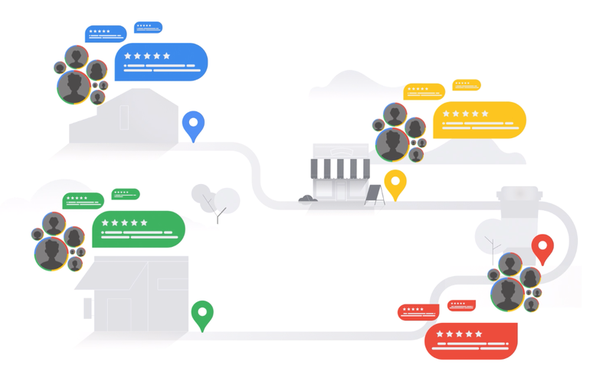
Google receives
about 20 million daily review contributions from people using Maps -- for the most part, the way the company gets its information.
On Thursday, the company shared more about the process, the
technology, and how it keeps information on Google Maps “reliable,” saying that less than 1% of content posted to Google Maps is fraudulent or abusive.
The content contributions
include everything from updated business hours and phone numbers to photos and reviews.
Algorithms, machine learning and humans help to reduce abuse, spam and other fraudulent business profile
edits.
Community members helped Google keep business information updated, such as hours of operation or health and safety protocols for 30% more businesses in 2021, compared with the prior
year.
advertisement
advertisement
Google last year blocked more than 100 million abusive edits. Continued advancements in machine learning helped to improve the ability to catch bot activity and suspicious patterns.
Through these advancements, Google managed to identify and remove more than 7 million fake business profiles, about 630,000 of which were reported directly to the company.
Google stopped more than 12 million attempts from bad actors to create fake business profiles and nearly 8 million attempts from bad actors to claim business profiles that did not belong to them.
With assistance from technologies, teams also disabled more than 1 million user accounts due to policy-violating activity, such as online vandalism or fraud.
Google last year also
blocked or removed more than 95 million policy-violating reviews, more than 60,000 of which were taken down due to COVID-related instances. The company also blocked or removed more than 190 million
photos and 5 million videos that were blurry or low quality, or that violated its content policies.
Contributed content and reviews have become an important part of Google’s
strategy. On Wednesday, the company began rolling out the latest version of its product reviews
update, incorporating additional signals and criteria in the ranking algorithm for English-language pages, but said it will add others in the future.
Google last month explained how Maps reviews work, how it develops and enforces policies, and the
role of machines and humans in content moderation. For example, reviews are sent to Google’s moderation system to determine whether a review violates its policy. If no policy violations are
detected, the review can post in seconds.
Reviews are evaluated to determine whether they contain offensive or off-topic content, whether the account leaving the review has a history of
suspicious behavior, and whether there is any uncharacteristic activity at the place or business being reviewed -- all before being forwarded to a human moderator.